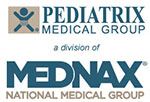Special Interest Group Update
Welcome to the newest NANN E-News section. In each issue, one of NANN’s special interest groups will share information in their area of focus.
Are NNPs Fading Away?
Ally Kayton, MSN APRN NNP-BC, Advanced Practice SIG Facilitator
Neonatal nurse practitioners (NNPs) are a vital part of the neonatal intensive care team. In recent years, many NNP programs have closed in order for universities to focus on the family nurse practitioner and acute care pediatric nurse practitioner programs. According to the Consensus Model for Advanced Practice Registered Nurses (APRN) Regulation, NNPs have their own population foci, and do not fall under the pediatrics discipline. Our NNP colleagues fought a hard battle to keep the role of the NNP separate from pediatrics.
Currently, NNPs make up 1.3% of all of the advanced practice nurses, compared to family nurse practitioners who make up 60.4% (AANP, 2018). In 2009, Pressler and Kenner identified reasons for the shortage of NNPs as high education costs, lack of faculty, and program closures (Pressler & Kenner, 2009). Nine years later, we are discussing the same topic with even fewer NNP programs than before. This is not due to a lack of tenacity among NNP program directors; bureaucracy always seems to be the elephant in the room. In addition, physician assistants have become an additional consideration to make up for the demand for NNPs in neonatal intensive care units (NICU). The question is, what are we going to do about it? NNPs are highly educated and specialized. We cannot allow our profession to come to a screeching halt.
NNPs need to re-group and take back our profession. We cannot forget the value NNPs bring to the clinical team. NNPs resuscitate in the delivery room and in emergency situations within our units and are the shoulder for parents to cry on when facing difficult decisions or diagnoses. We are uniquely qualified to train our novice NNPs, setting us apart from our colleagues in different disciplines (Jnah, 2018). Jnah discusses the valuable role NNPs plays in precepting NNP students by taking the unique set of skills that we have from the bedside to the role of preceptor (Jnah, 2018). Not only are we precepting our novice NNPs, we also are teaching residents who come through the NICUs in academic centers. We are leaders in Washington, DC, and within our national organization. We are a specialized group of advanced practice nurses, and we need to walk with our heads held high and value the knowledge we bring to the NICU team and physician colleagues.
The American Association of Colleges of Nursing sends out an annual survey to measure vacant faculty positions across all nursing schools. Currently, at the Master and Doctoral levels, there are a combined 18.2% positions vacant. In addition, the National Association of Neonatal Nurse Practitioners (NANNP) sent out a workforce survey in 2016 showing that despite best efforts, the NNP profession has remained stagnant for several years (Staebler and Bissinger, 2017). This can be attributed to a lack of faculty and preceptors to provide the education and training needed to train new NNPs.
So, what can we do? I ignite all of you reading this today to dig deep and look within to what has motivated you to pursue your career as a neonatal nurse and NNP. What drives you every day when you step foot into your unit? In order to continue to move our profession forward, we need to first define what it means to be a nurse, a neonatal nurse, and an NNP. Yes, we know the hours can be grueling. We work nights, weekends, holidays, and miss important events because we care for the tiniest, most vulnerable patients. It is important to continue to emphasize the value NNPs bring to the NICU team.
In the end the question remains, how do we grow our profession? One way we can overcome this dire situation is to clearly state program objectives regarding neonatology and how the profession is defined. The NNP is a clearly defined role and we need to protect it, not only for ourselves, but for the babies we care for. Specifically, we must start at embryology and work our way through the fetus and newborn, noting pharmacology and procedures specific to the neonate. Last time I checked there is no other discipline trained to put in umbilical lines. There is no other discipline trained in the didactic and clinical work within an NNP program specific to the patient population. Why are we making exceptions within neonatology to allow other disciplines to work within our space? The NNP can be compared to our neonatologist partners who have to complete 3 years of fellowship to become a neonatologist and cannot work in another area without additional specific didactics and clinical training. Statistics do not lie. One out of 10 births in the United States are preterm and NICU admission rates increased from 64.% to 77.9 % per 1000 births for all birth weight categories from 2007 to 2012 (Harrison & Goodman, 2015). This is just a small tool in the toolbox that we can put in our back pocket when discussing our future as a profession…we are in high demand!
References
American Association of Colleges of Nursing (2008). Consensus model for APRN regulation: licensure, accreditation, certification & education. Retrieved from http://www.aacnnursing.org/Portals/42/AcademicNursing/pdf/APRNReport.pdf.
American Association of Nurse Practitioners (2018). NP fact sheet. Retrieved from https://www.aanp.org/all-about-nps/np-fact-sheet
Harrison, W., & Goodman, D. (2015). Epidemiologic trends in neonatal intensive care, 2007-2012. JAMA Pediatrics,169(9), 855. doi:10.1001/jamapediatrics.2015.1305
Jnah, A. (2018). The value of the NNP preceptor. Retrieved from http://ensearch.com/the-value-of-the-nnp-preceptor/
Pressler, J. L., & Kenner, C. A. (2009). The NNP/DNP shortage. The Journal of Perinatal & Neonatal Nursing, 23(3), 272–278. doi:10.1097/jpn.0b013e3181b0bd79
Staebler, S., & Bissinger, R. (2017). Neonatal nurse practitioner workforce survey executive summary. Advances in Neonatal Care, 17(5), 331–336. doi:10.1097/ANC.0000000000000433


